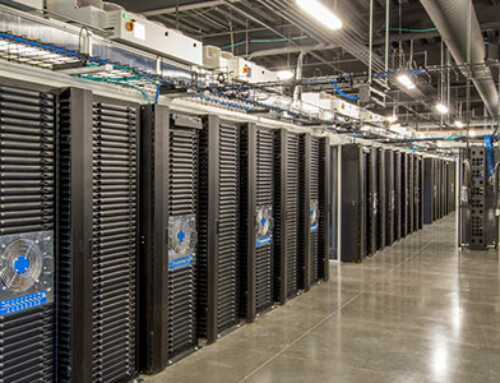- Internet access. Don’t assume workers have adequate online access at home or elsewhere. While many will, some won’t have reliable or fast enough service or only a mobile device. Quickly survey or otherwise gather data from the workers included in your remote work strategy and determine where the gaps are. For some workers, be prepared to invest in mobile hot spots and associated data plans, as well as providing stipends to establish home Internet access plans or upgrades to existing access.One of the largest blind spots is in knowing how much bandwidth workers will need to be optimally productive, and quickly assessing this early will pay dividends. Remote workers, especially at first, often have to sync their files and data. For some clients, this could be a lot of data that has to go back and forth regularly. How fast it goes will determine remote work productivity. More significantly, the types of applications that are used regularly, especially web and video conferencing, can determine bandwidth needs, as well.
- Remote work devices. There are two major forks in the road when it comes to devices. Either a) workers can use their own, which is a bigger security risk, but quite a bit cheaper and faster to deploy if their devices are up to the task, or b) a company can provide the devices that are needed. Given that the prevalence of Shadow IT (workers using unsanctioned, unofficial apps to get their work done) is generally higher than most companies are willing to admit — meaning that company data is already on many personal devices anyway — DSG advises companies to seriously consider assessing workers’ existing computing hardware, as they are the least expensive and quickest option to enable for a crash remote work program. Organizations can rent, lease, or buy devices as appropriate for those that don’t have them or are not suitable.What devices are needed? Presumably one smart phone and one computer or tablet, plus any Internet access hardware. But your specific business requirements will dictate what is needed. In addition, when providing a superior remote work strategy, there are a number of accessories that can greatly improve the experience, with minimal cost.
These include:
- A web cam for web conferencing, if the worker’s base computing device does not have one. 720P is the minimum acceptable resolution for quality results, but that is usually standard now in most web cams.
- A high-quality headset or headphones with mic. While workers almost always have headphones, you’d be surprised how many don’t have good enough microphones in their headphones for phone or web conferencing.
- An “On the Air” sign. Workers located at home or shared locations are at risk of being disturbed during remote meetings by those around them. Inexpensive On the Air signs with remote controls can be purchased at Amazon and make a real difference in the overall quality of the remote work experience during meetings and at any time. For the budget-conscious, On the Air door hangers are also available. The positive impact of using these signs to ensure smooth communications and collaboration is surprisingly high.
- Multiple monitors. Workers accustomed to having multiple monitors at work love the increased screen real estate they provide. In addition, to needing to have the extra monitors available, be sure to verify that systems have the required capabilities to support using multiple displays.
- Secure remote access to business assets and online services. Typically this is provided by a virtual private network (VPN) solution, which sits on the PC, laptop, or mobile device and creates an encrypted network connection that makes it safe for the worker to access IT resources within the organization and elsewhere on the Internet or other networks. As noted above, usability is key here, as is reliability, because almost every other part of the remote work solution provided will use the VPN as the core foundation it uses for secure Internet access.In general, the worker should never do any work for the organization without the VPN on their device(s) being turned on. This includes online services on the Internet. This is because the VPN ensures a higher level of security and safety between the remote worker and the service. It is important to review and test any business Internet connections and VPN appliances to ensure they are robust enough to handle the multiple potential connections.
In addition to normal work traffic, non-work traffic generated by employees utilizing the VPN connection while stream video, etc. may have a negative impact on other remote users who are competing for the same Internet and VPN resources.
Be sure to test all the service providers, devices, and locations to be used at the very least, and ensure performance is sufficient. In addition, strongly consider two-factor authentication (2FA), instead of just user IDs and passwords, to significantly boost security. Workers can use their mobile devices as a 2FA authenticator.
DSG has a range of solutions for remote access, including using VPN, as well as sample policies and we are ready to support your needs. But as you ramp up to a wider variety of workers and greatly increase the numbers working from afar, you’ll have to make sure that your core remote work foundation is truly up to the task, including acquiring enough licenses for all the intended workers. There are many nuances in ensuring a quality remote access experience, and even most organizations won’t have deployed all the items above fully and in a manner that is easy enough, fast enough, sufficiently robust, especially with the various little details that really make a high-quality remote work experience.
Keep in mind that a VPN is not necessarily the only solution to providing remote access, nor is it often sufficient, even though it’s probably the most well-known. One issue is that VPNs can ultimately end up being a tricky solution to implement and manage. DSG can help you to determine the best approach and any alternatives for your business.
- Access to company phone system. If your business relies on a business phone system to conduct day-to-day operations it is important to determine how remote workers will access your business phone system. Whether your phone system is located physically in your office or hosted in the cloud, there may be challenges that need to be considered and worked through ahead of time for your remote workers to stay connected and productive.
Further-more, our staff is taking additional steps such as using tools typically reserved for providing support via remote control even while on site. These remote support tools reduce or eliminate the need for our staff to physically touch your keyboard or mouse to help reduce transmission of germs.
We understand that the rapidly evolving situation is causing uncertainty and we are encouraging all of our clients, employees and community to put their health and well being first so that we can continue to operate effectively and help prevent the spread of disease.






